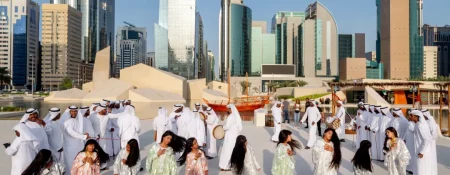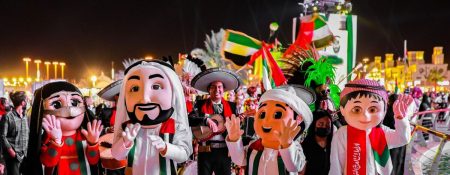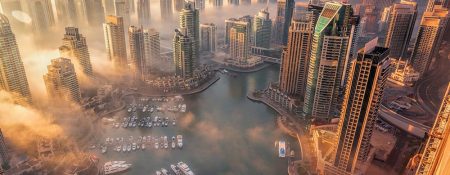Though in time it has lost its importance as a commercial center to the more modern and urban areas, Deira Dubai still remains one of the oldest and busiest city districts and vibrant fusion of antique heritage and new tendencies. Deira offers both traditional cultural attractions and modern entertainment, as well as business opportunities; it’s a place where one can find a modern shopping mall just next to a traditional souk or a fancy new hotel a few steps from the narrow alleys of the old city.

From the northeast, Deira is bordered by the Emirate of Sharjah; the Al Ittihad Road makes another dryland border, and the western part of the district faces the Dubai Creek and the Arabian Gulf. The area adjacent to the Gulf is known as Deira Corniche — after the eponymous waterfront.
The original Deira Corniche used to be a waterfront esplanade with a broad pedestrian walkway. Its construction began in 1975, and until the beginning of the 2010’s it remained mostly a leisure and recreation destination. In 2012, however, a major reconstruction began. Aiming to completely repurpose the waterfront, it turned the promenade into wharfage for dhows — traditional trading vessels of the Gulf region. The new quay stretches for 3 km and offers berthing places for about 450 dhows in 30 loading areas at the same time, as well as other important facilities like reporting wharves, administrative buildings, and a refueling station. The wharfage became an important addition to the maritime infrastructure of the Dubai Creek: it provides a significant amount of extra loading/unloading capacity and can receive much bigger vessels than the Creek itself.

However, as the territory of Deira Corniche is not limited to the waterfront itself, the activities in this district are not limited to maritime trade — the Corniche offers various attractions to travelers and tourists as well. One of the most notable landmarks in the area is the Hyatt Regency Dubai Hotel — a luxury hotel and a piece of history at the same time. Opened in 1980, it not only became the first Hyatt hotel in UAE, but also pioneered in some kinds of entertainment — like the very first skating rink in Dubai, or a revolving restaurant on the roof of the main building, offering a magnificent view of Dubai and Sharjah.
Another place worth visiting in the Deira Corniche is the Deira Waterfront Market — the largest and, perhaps, the best fish market in Dubai. A successor to the Deira Fish Souk, the Waterfront Market combines traditional heritage with modern comfort. It offers a great variety of fish and seafood, both fresh and processed; many goods are unique and can’t be found anywhere else in the city. Suffice it to say that many professional chefs start their day at work with a visit to the Waterfront Market; it is open 24/7, except for some time at night, used to clean the premises.

Some of the notable destinations are located not in the Corniche itself, but within the close proximity of it. Among such places are the Gold Souk and the Spice Souq — two traditional bazaars, each one a must-see for those who want deep insight into the local culture and heritage, and truly understand why Dubai is traditionally called ‘The City of Gold’. Another, more modern marketplace is located very near – Deira Islands Night Souk, located on the Deira Islands, also known as “the biggest night market in the world”.
The Deira district itself is a glaring example of cultural expansion and interchange — originally Arabic, the area is now populated mostly by Hindu, Pakistani, and many other expat communities. And the proximity of Dubai International Airport definitely makes Corniche Deira a destination of choice for a dedicated planespotter.




The UAE’s rich history is rooted in trade and tied to Islam. Its unique location between Europe and the Far East became the crucial factor in it's growth into the world's largest trading hubs. Throughout the ages, these lands had attracted merchants from India and China, and were prized by Europeans, in particular the Portuguese, the Dutch and the British.
After the discovery of oil and the formation of the Emirates, the wise rulers began the rapid development of the country's economy, shaping it into what it is today. Though small in size, the UAE quickly became an important player in regional and international affairs.
Although it's growth and development, UAE heritage have not been forgotten - on the contrary, is still well-respected among the nationals. History and culture of local people can be felt in the legendary hospitality of local hotels, architecture of modern skyscrapers and openness and kindness in living among the multinational community.
Here you can read various articles about UAE heritage, history and culture, and better understand, why this country's development became such a success throughout the years.